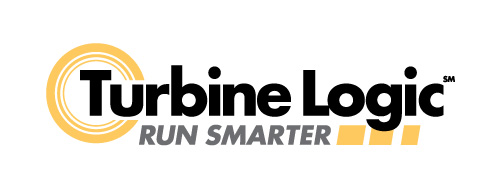I like to slow down and leave the beaten path when I’m not working feverishly to solve gas turbine and energy related problems. Leaving the beaten path often involves a retreat to my cabin in the north Georgia mountains. My gateway to the cabin and the many nearby forest service roads is my old F-150 pickup truck that I’ve had for the duration of my career. Despite its resilience through the many challenges I’ve thrown at it, the truck does have its breakdowns.
When I hear stories of forced outages at plants, I am often reminded of my experiences getting stuck in the mountain forests of north Georgia. These breakdowns inevitably arise deep in the woods with an approaching storm or nightfall when reliability is needed most. Usually the breakdown occurs because of a small issue that finally grew too big. For example, a sensor has drifted too far out of spec or a vacuum hose may fail after months of developing small cracks and vacuum leaks.
Thankfully, modern vehicles have all sorts of warning lights to alert you to any potential issues with sufficient time to get repairs. In a similar way, combustion dynamics monitoring systems provide the same service to gas turbine operators. By capturing and trending the signature of a gas turbine combustion system, CDMS is the warning light before a critical failure occurs in a gas turbine hot section.
Watching the Check Engine Light
If my truck had modern on-board diagnostics, it would surely have saved me many wet or dark hikes out of the woods. I don’t have these issues in the city when I am commuting or driving with my family. The modern-day vehicles that I use for these purposes have advanced on-board diagnostics that can detect an instrumentation fault or even the smallest vacuum leak long before it causes drivability issues. When the “check engine” light comes on, I have plenty of time to plan for repair. Thanks to advanced on-board diagnostics, the surprises that happen in the woods with my old truck just don’t happen with these modern cars, even though the truck is a simpler and more rugged machine.
Operating a gas turbine without these advanced monitoring systems is just like driving an old truck through the forest. As long as things are running, the day continues as planned until the unexpected inevitably changes those plans. Meeting all of the maintenance intervals does not change this fact. Operating a gas turbine with an advanced CDMS algorithm is like the modern vehicle with on-board diagnostics. Surprise breakdowns are very un-common; when they occur, there is almost always a warning or precursor that has been available and not acted on by the user.
On-board Diagnostics for Gas Turbines
Similarly, a combustion dynamics monitoring system can save a gas turbine plant from forced outages. Advanced CDMS trending algorithms can identify small changes in combustion dynamics trends. These algorithms can distinguish between underlying hardware faults, instrumentation faults, and tuning issues. Operators who use this software receive advanced warning of impending failures with sufficient time to plan an inspection or outage. Just like your car’s dashboard, CDMS systems provide several warning lights providing a glimpse into the health of your gas turbine.
While the CDMS system helps identify and thus protect against damaging levels of combustion dynamics, it can offer much more when coupled with advanced trending software. This is because small hardware faults, such as hot section cracks, can have significant impact on combustion dynamics characteristics. A small developing crack in a combustor liner can make the combustor louder, or quieter, or perhaps shift the frequency of a tone. A hardware fault does not always manifest as a loud combustor!
Getting Up to Speed
I find it interesting that gas turbines lag in this technology despite their cost and availability of repair. Part of this is related to the size of the user base. For example, almost one million F-150s were sold each year during the last three years. Thanks to the vast user base, every conceivable issue has been discovered by someone and posted on the internet with a fix. Nearly any issue can be fixed at home, or in the woods, with some DIY effort and minimal value at risk.
Nevertheless, we have a world were automobiles have state of the art monitoring diagnostics despite cheap and easy availability of service, while gas turbines have limited advanced monitoring despite the high cost and low availability of service. At the center of this conundrum is the smaller user base and slower adoption of artificial intelligence by the gas turbine industry. By employing advanced CDMS and advanced trending software, we begin to embark down the path of the modern vehicle.
CDMS is the Warning Light You’ve Been Waiting For
The message that I hope to instill with this newsletter is the opportunity to embrace advanced monitoring algorithms for combustion dynamics. Combustion dynamics offer a rich data stream that can hold clues about the health of many components on the engine. Other industries have embraced similar technology, and consequently we can enjoy things like highly reliable vehicles. Third-party addition of such technology to an existing gas turbine is typically relatively easy, and can bring the modern day expectation of reliability to an older asset.
As for my time in the woods, I will forge ahead with the old truck which has the right combination of character and value to smash through old mountain culverts and graze the occasional tree. When things break down, a little YouTube engineering usually gets me out of the woods, and my worst-case scenario is a hike in the woods. Does this measure up to your worst-case scenario in a gas turbine forced outage? If not, I encourage you to explore combustion dynamics monitoring and the potential that it offers with advanced dynamics trending algorithms.
 Yours truly, Tim Lieuwen, CTO – Turbine Logic
Yours truly, Tim Lieuwen, CTO – Turbine Logic

Executive Director – The Strategic Energy Institute at Georgia Tech
Photo by Justus Menke on Unsplash

